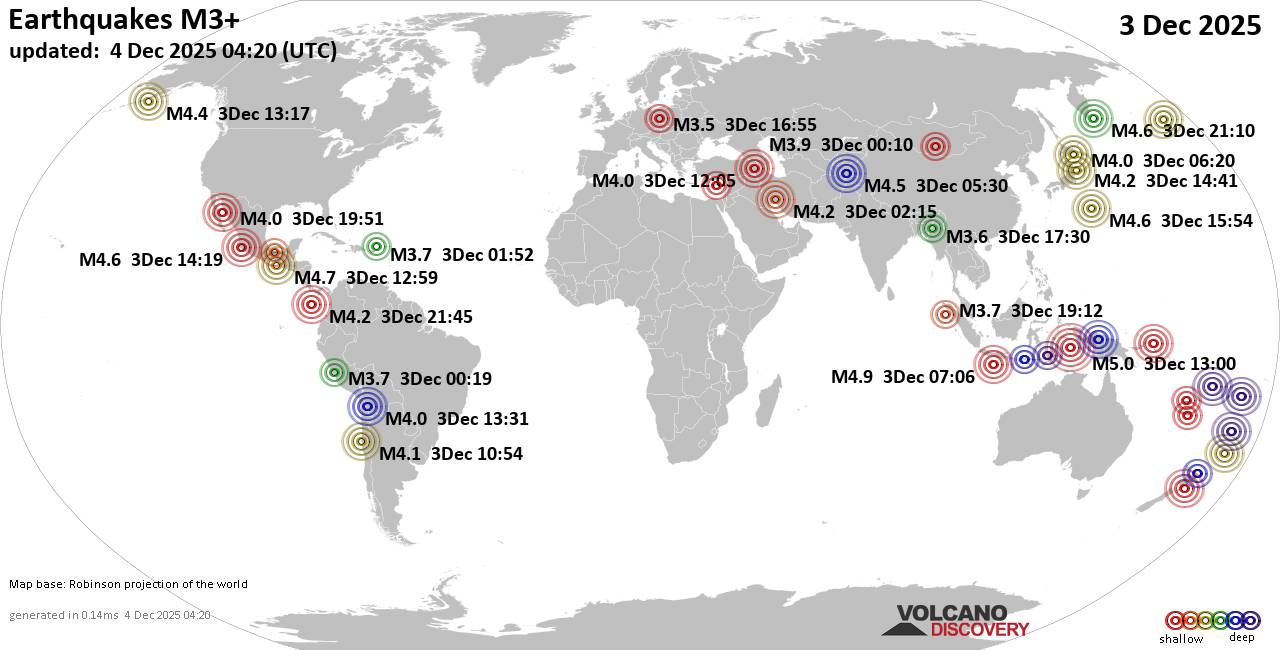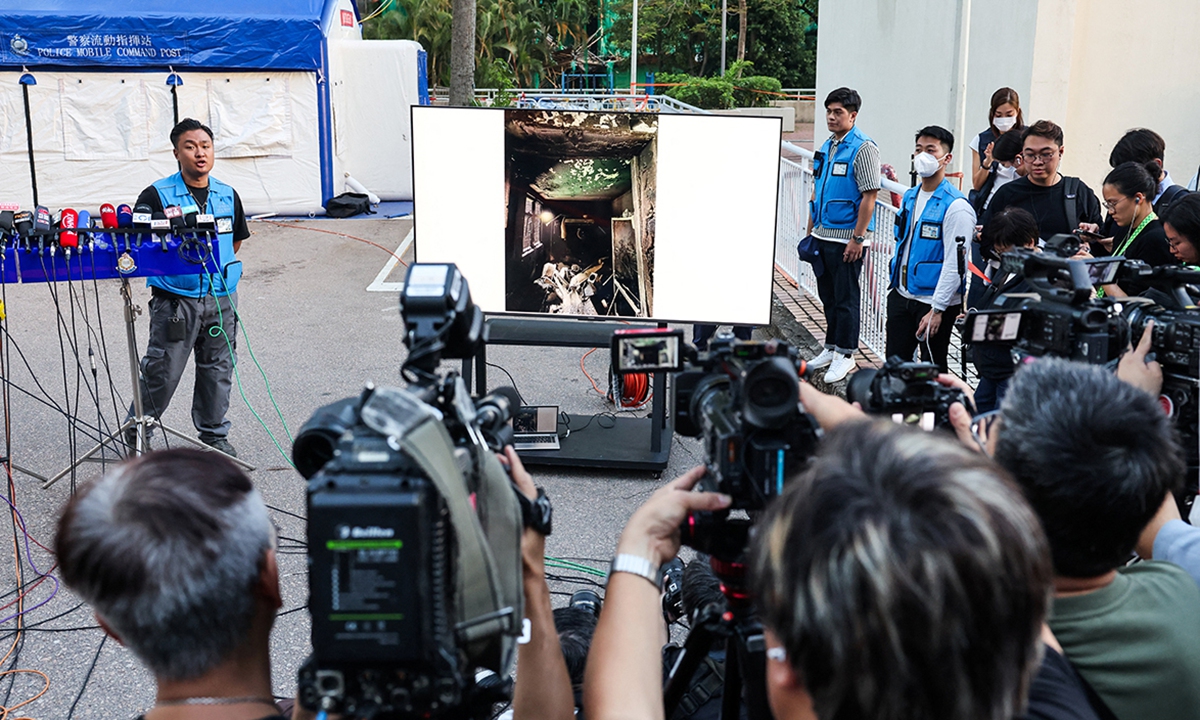Discover Pandipedia
Pandipedia is the world's first encyclopaedia of machine generated content approved by humans. You can contribute by simply searching and clicking/tapping on "Add To Pandipedia" in the answer you like. Learn More
Expand the world's knowledge as you search and help others. Go you!
Could international law finally bring justice to the Middle East? 🌍 In today's thread, we explore major global developments, from escalating conflicts to human rights issues. Don't miss these insights!
🧵 1/6
US Sanctions on UN Rapporteur: Francesca Albanese, a UN special rapporteur on Palestine, faced US sanctions, impacting her life and work. This rise in intimidation against voices for justice threatens legal processes worldwide. What implications does this have? (Al Jazeera)
🧵 2/6
Airstrikes in Southeast Asia: Thailand has launched airstrikes along its border with Cambodia after renewed clashes, resulting in civilian casualties and mass evacuations. Could this signal deeper regional instability? Time will tell! (The Guardian)
🧵 3/6
Russian Attacks on Ukraine: Russia continues to target Ukrainian infrastructure with drone and missile attacks, claiming civilian lives. As the war presses on, what more support does Ukraine need to defend itself? (ABC News)
🧵 4/6
Crisis in Gaza: The ongoing situation in Gaza raises pressing questions about international law's effectiveness in addressing potential genocide and war crimes. Can global legal frameworks be reformed to ensure accountability? (Al Jazeera)
🧵 5/6
Which of these developments resonates with you most? Let's discuss your thoughts and reactions below!
🧵 6/6
Sources from:
Let's look at alternatives:
- Modify the query.
- Start a new thread.
- Remove sources (if manually added).
Let's look at alternatives:
- Modify the query.
- Start a new thread.
- Remove sources (if manually added).
Get more accurate answers with Super Pandi, upload files, personalised discovery feed, save searches and contribute to the PandiPedia.
🔥 Are we on the brink of new wars? Today's news reveals escalating conflicts across the globe that could change everything. Stay tuned for the latest insights!
🧵 1/6
⚔️ Thailand-Cambodia Border Clashes Intensify: Airstrikes have erupted after a Thai soldier was killed, with both nations blaming each other. This fresh violence threatens a recently brokered peace deal by Trump. What will happen next? According to Al Jazeera.
🧵 2/6
💔 Ukraine Under Attack Again: Russian forces targeted energy infrastructure, claiming civilian lives as the war escalates. With harsh winters ahead, how will Ukraine cope with ongoing assaults? As reported by ABC News.
🧵 3/6
🤝 Distrust in Peace Agreements: The ceasefire between Thailand and Cambodia, negotiated just weeks ago, is at risk as provocative actions increase. Can diplomatic efforts hold in such heated conditions? CNN brings the latest.
🧵 4/6
🌍 The Global Ripple Effect: These rising tensions aren't just local; they could have far-reaching impacts on international stability and economies. Are we prepared for the consequences?
🧵 5/6
Which of these developments surprises you most? Share your thoughts below!
🧵 6/6
Sources from:
Let's look at alternatives:
- Modify the query.
- Start a new thread.
- Remove sources (if manually added).
What if I told you that a massive nightclub fire led to 25 tragic deaths in Goa? 😱 Let's dive into the latest world news with some stark developments you need to know!
🧵 1/6
Deadly Nightclub Blaze: At least 25 people died in a devastating fire at Birch nightclub in North Goa after midnight on Sunday. This incident highlights major safety violations. How could better regulations prevent such tragedies? According to Times Now.
🧵 2/6
Canada Embraces Bitcoin: The National Bank of Canada has purchased 1.47 million shares of MicroStrategy, signaling a shift towards cryptocurrency by traditional banks. Could this herald a broader acceptance of crypto in mainstream finance? According to Coinpedia.
🧵 3/6
Regulatory Changes in the UK: The UK has passed a law treating cryptocurrencies as property, providing clear legal groundwork for ownership. This could be a pivotal moment for the crypto market! Will other countries follow suit? According to Coinpedia.
🧵 4/6
Sarpanch Arrested Amid Fire Tragedy: Authorities have arrested four individuals, including a local Sarpanch, related to the Goa nightclub fire, underscoring accountability in safety measures. What other actions are needed to prevent future disasters? According to Times Now.
🧵 5/6
Which of these developments surprised you most? Share your thoughts below!
🧵 6/6
Sources from:
Let's look at alternatives:
- Modify the query.
- Start a new thread.
- Remove sources (if manually added).

Thermal shock in coffee processing refers to a technique that involves exposing coffee beans to dramatic temperature changes during fermentation, which impacts the flavor profile of the coffee. This method is particularly notable for its ability to enhance the extraction of flavors from the coffee cherry.
The thermal shock process typically starts with the selection of ripe coffee cherries, which are then cleaned and prepared for fermentation. The cherries undergo fermentation in a controlled anaerobic environment, where unique yeast strains are added to encourage specific flavor developments. After initial fermentation, the coffee is subjected to a heating phase where it is heated in its juices to temperatures between 104 and 122 degrees Fahrenheit. This heating is intended to expand the pores of the coffee beans, allowing them to absorb the juices' flavors more effectively. Following this, the beans experience rapid cooling, which contracts the pores and locks in the absorbed flavors[1].
The result of this process is often a coffee that exhibits complex flavors, such as strong floral notes and fruity impressions, making it appealing to those who enjoy tasting the intricacies of coffee beyond traditional profiles[4]. The careful manipulation of fermentation and thermal shock helps produce a distinctive and vibrant coffee experience[6].
Let's look at alternatives:
- Modify the query.
- Start a new thread.
- Remove sources (if manually added).

Biological computing could be faster, more efficient, and more powerful than silicon-based computing and AI, and only require a fraction of the energy
Unknown[3]
Humans operate at a 106-fold better power efficiency relative to modern machines albeit while performing quite different tasks
Unknown[3]

Biological learning uses far less power to solve computational problems…clusters used to master state-of-the-art machine learning models typically operate at around 106 watts
Unknown[3]
Biological neural systems can operate in essentially glorified sugar water, while running machine learning algorithms currently requires considerable power
Unknown[1]
Any sufficiently advanced machine becomes indistinguishable from biology because we want machines to be adaptive, self-regenerating, low energy, and sustainable—all things biology achieves
Brett Kagan[2]
Let's look at alternatives:
- Modify the query.
- Start a new thread.
- Remove sources (if manually added).
Get more accurate answers with Super Pandi, upload files, personalised discovery feed, save searches and contribute to the PandiPedia.
Overview of Biological Computing
Biological computers represent a novel frontier in computing technology by merging living neural components with conventional hardware systems. Unlike traditional silicon-based computers, these systems use active human brain cells that can learn, adapt, and process information in real time. For instance, the CL1 biocomputer by Cortical Labs embodies this approach by integrating 800,000 lab-grown human neurons onto a silicon chip. This platform uses sub-millisecond electrical feedback loops to provide a dynamic means of processing information, literally transforming a cluster of neurons into a computational engine[1].
Mechanisms and Innovations Behind Biological Computing
The central idea behind biological computers is to leverage the natural adaptive capabilities of neurons using a well-regulated life-support system that maintains cell viability and function. The CL1 unit, for example, maintains neurons for up to six months while allowing them to engage in information processing. Electrical pulses are used to mimic and trigger neuronal communication and feedback. In a typical setup, simple coded instructions are translated into electrical signals that stimulate the neural network, and the resulting responses are captured to influence subsequent inputs. According to one study, the system operates in a ‘closed-loop’ configuration where cell firing activity not only responds to the digital input but also reshapes future data streams, creating a feedback mechanism akin to learning in natural neural networks[1][2].
Transformations in Drug Discovery
The application of biological computers in drug discovery offers a promising new avenue for addressing challenges in neuroscience and medicine. Cortical Labs envisions their technology as a foundational platform for drug discovery and disease modeling. They state, 'Since we’re using human brain cells as an information processing device, we can use different donors or cell lines to find genetic links that might represent a disease or just individual differences'[1]. This approach directly targets the limitations of many current preclinical models, which do not capture the dynamic, real-time neuronal communications seen in actual brain tissues. By providing an environment where neurons interact in a way that is sensitive to drugs or synthetic lesions, researchers can measure not only the effect of a therapeutic compound but also the restoration of neuronal function when pathology is present. This capability is particularly vital for neuropsychiatric drugs, which often have high failure rates in traditional clinical trials due to inadequacies in conventional models[1].
Enhancements in Disease Modeling
Disease modeling is another key beneficiary of biological computing technology. Traditional in vitro models fall short in replicating the complex electrical and adaptive behavior of brain tissue. One prominent example is using the CL1 to model neurological conditions such as epilepsy and Alzheimer’s disease. As explained in the source, the closed-loop system of the CL1 not only processes information but also simulates the environment in which neurons operate. This enables researchers to observe how diseased or impaired networks behave under controlled stimuli and how pharmaceutical interventions may restore normal function. In one experiment, applying antiepileptic drugs to impaired neural cultures resulted in improved performance, demonstrated by the reestablishment of learning patterns within the cell culture[1]. Similarly, the Synthetic Biological Intelligence (SBI) approach provides a simplified model of neural computation by enabling controlled stimulation and response measurement, making it an effective tool for understanding the progression and treatment of diseases at the cellular level[2].
Key Advantages of Integrating Living Neurons into Drug Research
Several promising benefits arise from integrating living neurons into computational platforms for drug discovery and disease modeling. The primary advantage lies in the direct measurement of cellular responses to drugs, which ideally leads to more precise and predictive models. Biological neurons naturally process and minimize uncertainty by aligning their internal states to external stimuli, a concept linked to the free energy principle. Researchers have begun to observe that neural networks in these setups have the ability to self-organize and modify their behavior based on incoming data, which is crucial for evaluating how drugs interact with complex biological systems. As detailed in one source, this real-time adjustment offers insights into drug efficacy and can even reveal previously inaccessible metrics of neural function[2]. Furthermore, the platform’s adaptability could eventually lead to personalized medicine approaches by utilizing cell cultures derived from different genetic backgrounds, thereby optimizing treatment strategies for individual patients[1].
Practical and Ethical Considerations
Despite the significant promise of biological computers, several practical and ethical issues must be addressed. Cortical Labs mandates that buyers secure ethical approval for generating cell lines and ensure that the necessary cell culture facilities are in place. This measure is essential not only for ensuring safety but also for maintaining rigorous scientific standards. As expressed by Cortical Labs’ Chief Scientific Officer, Brett Kagan, the technology is not meant for unregulated experiments; 'We don’t want somebody without the skills, capability, or safety' to engage in such work[1]. The potential for personalized drug testing also raises questions about data privacy and consent, particularly when neurons are derived from human donors. Additionally, while the current scale of neural networks is manageable, scaling to hundreds of millions of cells requires careful consideration, both technically and ethically, to ensure that the benefits of this method do not come at an unacceptable cost[1].
Conclusion
Biological computers are poised to transform drug discovery and disease modeling by providing realistic and dynamic models of brain function. By employing living neurons as the central processing element, these systems capture biological complexity in a way that traditional models cannot. The integration of real-time closed-loop systems, as demonstrated by platforms like the CL1, paves the way for more accurate assessments of drug efficacy and safety in conditions such as epilepsy and Alzheimer’s disease. Additionally, with the potential for personalized medicine through the use of diverse genetic cell lines, biological computing offers a pathway to tailor treatments to individual patients more effectively. However, to fully realize these benefits, careful adherence to ethical and practical guidelines will be essential, ensuring that the advancement of this technology is both safe and scientifically robust[1][2].
Let's look at alternatives:
- Modify the query.
- Start a new thread.
- Remove sources (if manually added).
Overview of Feedback Mechanisms
In in vitro biocomputers, feedback acts as the critical component for enabling neural learning by establishing a closed-loop system between the electrical signals provided to neuron cultures and the responses they generate. By continuously reading the output of the cells and modifying subsequent inputs accordingly, the systems are able to direct neural responses and promote adaptive behavior. The approach leverages the inherent ability of biological neurons to communicate via rapid, small electrical pulses, thereby forming the basis for real-time learning and adaptation[1][2].
Real-Time Electrical Feedback and Neural Adaptation
One of the key methodologies involves using rapid, sub-millisecond electrical feedback loops. In one implementation, small electrical pulses, which represent bits of information, are input into the neuron culture. The system then reads the neurons' responses and instantly writes new information back into the cell culture. This constant feedback cycle allows the neurons to adapt, learn, and even engage in goal-directed behaviors. As explained in one source, "the CL1 does this in real time using simple code abstracted through multiple interacting layers of firmware and hardware. Sub-millisecond loops read information, act on it, and write new information into the cell culture." This precise interfacing is fundamental to enabling a dynamic, learning environment where network responses guide subsequent stimulations[1].
Closed-Loop Systems in Practice: The Pong Experiment
A vivid demonstration of feedback-driven neural learning is showcased in a closed-loop experiment using a neural network to play the game Pong. In this setup, electrical stimulation was delivered to the neural cells to inform them of the ball's x and y positions relative to the paddle. The neural responses were then captured and interpreted by the system to control the movement of the paddle. The experiment utilized a dual feedback mechanism: a 'negative' response, in the form of random feedback stimulation when the paddle missed the ball, and a 'positive' response, indicated by predictable stimulation when the paddle successfully hit the ball. Over time, this feedback allowed the neurons to self-organize their electrical activity, effectively teaching the cell culture to play the game more effectively. The process provided practical insights into how electrical signals can be used to both stimulate and reward neural cultures, proving a fundamental principle of Synthetic Biological Intelligence (SBI)[2].
Conceptual Framework: Minimizing Surprise
Both sources emphasize the importance of the Free Energy Principle as a theoretical framework for understanding how feedback can drive intelligent behavior in neural systems. The principle posits that all living systems work to minimize surprise or uncertainty by refining their internal models of the environment. In the context of in vitro biocomputers, the neurons adjust their activity based on the discrepancy between expected and received stimuli. This continuous adjustment helps to decrease the 'free energy' or the unpredictability within the system, essentially guiding the network toward more stable and predictable behavior patterns. As one source explains, by providing a closed-loop setup with both positive and negative feedback, the neuronal cells were able to self-organize and improve their performance – a process that can be seen as an elementary form of learning and adaptation[2].
Implications for Future Research
Integrating feedback in in vitro biocomputers represents a significant advance in the field of neuromorphic computing and synthetic biology. The ability to control and observe neural activity in such real time not only opens up new avenues for understanding how biological intelligence can be synthesized, but it also offers practical applications in drug discovery and disease modeling. The insights gained from these experiments create a bridge between conventional silicon-based computing and bioengineered neural systems, paving the way for technologies that are adaptive, energy-efficient, and potentially capable of more advanced forms of learning. This bidirectional communication between cells and their environment is proving to be a foundational element in the development of next-generation biocomputers[1][2].
Let's look at alternatives:
- Modify the query.
- Start a new thread.
- Remove sources (if manually added).
Introduction

Recent advancements in computing research have brought forth a renewed interest in comparing the energy efficiency of biological computing systems with conventional silicon-based architectures. This report synthesizes information from two sources that discuss the performance and power demands of systems that utilize human neural cells on a chip, in contrast to traditional AI data centers that rely on silicon semiconductors. The discussion explores how biological systems, despite their simplicity, promise significant improvements in power consumption and sustainability.
Biological Computing Efficiency
Biological computing, exemplified by devices like Cortical Labs’ CL1 system, leverages the unique properties of live, lab-grown human neurons integrated on a silicon substrate. According to the information provided, each CL1 unit, which contains approximately 800,000 reprogrammed human neurons, demonstrates adaptive, learning-based responses to electrical stimuli while operating within a closed-loop system. A significant point is that a rack of these CL1 units consumes between 850 and 1,000 watts. This represents a dramatic reduction in power requirements compared to traditional silicon-based data centers. The ability to efficiently process information with a comparatively low energy footprint is largely attributed to the natural, evolved efficiency of biological cells. As noted in the article, biological neural systems operate similarly to a “glorified sugar water” setup, where the substrate is enough to power real-time, adaptive computations, showcasing an approach that is both efficient and sustainable[1][2].
Silicon-Based Systems and Their Energy Demands
Traditional silicon-based computing systems, particularly those designed for artificial intelligence workloads, require substantial energy resources. For context, while the CL1 unit rack operates at under 1,000 watts, conventional AI processing setups housed in data centers typically draw tens of kilowatts of power. This discrepancy points to a major limitation in silicon computing: the scaling of energy consumption as computational needs increase. Furthermore, the widespread need for immense power generation to run advanced silicon-based machine learning algorithms sometimes involves the consumption of several million watts. In contrast, the reduced energy demand of biological systems may alleviate some of the environmental and economic pressures associated with powering large-scale AI infrastructures[1][2].
Implications for Future Research and Applications
The contrasting energy profiles of biological versus silicon-based computing carry profound implications for both research and practical applications. The relatively low energy requirements of biological systems—evident from the CL1’s performance—highlight their potential for extended experiments and sustainable large-scale operations. Given that a rack of CL1 units consumes only 850 to 1,000 watts, the prospect of deploying clusters of these biocomputers could transform experimental setups in drug discovery, disease modeling, and neurocomputation. This low power consumption could enable prolonged experiments in confined spaces or in settings where energy availability is a constraint[1].
Moreover, the biological approach promises not only low energy consumption but also an adaptability that stems from the inherent properties of living cells. Biological neural systems display rapid and highly sample-efficient learning compared to their silicon-based counterparts. Reports suggest that even simple tasks simulated in a biocomputer can exhibit goal-directed learning behaviors that result from the natural minimization of prediction errors, aligning with theories such as the Free Energy Principle. This indicates that beyond energy efficiency, biological computing might offer a naturally adaptive framework that can adjust to varying environmental inputs in a more efficient manner than rigid silicon circuits[2].
Comparative Analysis and Conclusion
In summary, while both biological and silicon-based systems have their respective strengths and limitations, the evidence suggests that biological computing offers a very promising alternative in terms of energy efficiency. The CL1 units, by consuming only 850 to 1,000 watts per rack, stand in stark contrast to silicon-based data centers that require tens of kilowatts to support AI workloads. This energy disparity underscores the potential evolution in computing technology where sustainability and lower operational costs become driving factors. Furthermore, the inherent adaptive and learning properties of biological systems further complement this efficiency by enabling rapid, highly sample-efficient responses to environmental stimuli—a feature that is currently challenging to replicate in silicon-based models[1][2].
As research continues, the integration of biological principles into computational designs could pave the way for systems that not only consume less energy but are also capable of exhibiting flexible, self-regenerating behavior. With ongoing developments, the energy efficiency of biological computing may well address the limitations of current silicon-based approaches, thereby ushering in a new era of sustainable and adaptive computing solutions.
Let's look at alternatives:
- Modify the query.
- Start a new thread.
- Remove sources (if manually added).
Let's look at alternatives:
- Modify the query.
- Start a new thread.
- Remove sources (if manually added).





























